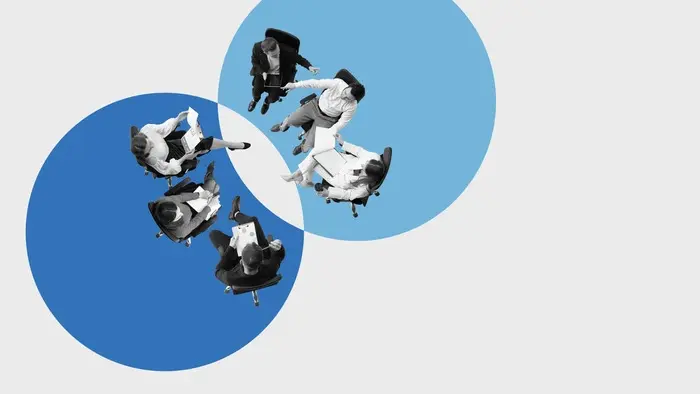4 min read
The Culture Conversation Club Leaders Can’t Ignore: How Your Staff Should Shape Your Strategy
 Maggie Heil
:
August 05, 2025
Maggie Heil
:
August 05, 2025
Private clubs have never faced greater pressure to deliver truly exceptional member experiences. As member expectations continue to rise, clubs are discovering that their long-term success hinges on one critical factor: attracting, developing, and retaining top-tier talent. The challenge? Today's best hospitality professionals have options, and they're increasingly selective about where they invest their careers. To compete for exceptional people who can create those memorable moments members treasure, clubs must be prepared to offer more than just competitive pay—they need the right culture, comprehensive benefits, and a compelling vision that makes talented individuals want to be part of their story.
In the latest episode of Crushing Club Marketing, Ed Heil sits down with Meridith Picarelli-Khattar, a Certified Club Manager and Certified Chief Executive with over 20 years of experience in club management. Most recently, she served as Interim General Manager at Chevy Chase Club outside of Washington, D.C. Her approach reflects a growing recognition among club leaders: creating a remarkable member experience begins with how clubs treat the people delivering it.
Why Culture Deserves a Seat at the Leadership Table
Private clubs are known for their traditions, long-tenured staff, and strong sense of identity. But when it comes to building sustainable teams today, tradition alone is no longer enough.
Today’s workforce is asking bigger questions. People want to know whether a job aligns with their values, supports their well-being, and allows for personal growth. These expectations are not limited to one generation. They reflect a broader shift in how employees evaluate the kind of workplace they want to be part of.
According to Picarelli-Khattar, cultural alignment is crucial. “Our job as leaders is to create an employee experience that they can, in turn, create for the members,” she said. Clubs that create a culture of care and connection internally are better positioned to deliver a consistent and meaningful experience to their members.
Flexibility Is No Longer a Luxury
What once may have been considered extra—like paid parental leave, mental health resources, and flexible scheduling—is now being viewed as a baseline in many markets. These offerings are not just perks. They are part of what it takes to retain great people in a competitive job market.
Clubs do not need to reinvent their staffing model overnight, but they may benefit from considering new ways to provide flexibility. That might include rethinking shift structures, offering job-sharing options, or simply being more open to adjusting hours when life circumstances change.
“At Chevy, we have had managers return to work after starting families and found ways to make it manageable,” said Picarelli-Khattar. “That flexibility was not always standard in the past, but it makes a real difference.”
She also emphasized that flexibility is not just about accommodating parents. It benefits all employees who want to build careers and have meaningful lives outside of work.
Supporting Working Families Is a Strategic Advantage
For many club professionals, especially women, one of the biggest obstacles to long-term career growth is the challenge of balancing professional responsibilities with family life. It is no surprise that although over 60 percent of CMAA student members are women, only 14 percent of general manager roles nationwide are held by women.
That drop-off is not a reflection of talent or ambition. More often, it reflects a structural gap between what many club roles demand and what many professionals can sustain without personal sacrifice.
Picarelli-Khattar speaks candidly about her own journey navigating motherhood while advancing in club leadership. “It took me a long time to figure out how to have a family and stay in this industry,” she shared. “When I came back from leave, I was expected to jump right back into what I had been doing before, and no one was really there to help me figure out how to transition.”
That experience inspired her to help shape a formal parental leave program at Chevy Chase Club, something she says can make a meaningful difference in retaining talented people. By supporting employees before, during, and after family transitions, clubs can strengthen loyalty and reduce costly turnover.
Representation Shapes Culture
Leadership teams that reflect a variety of perspectives — across gender, age, and background — are more likely to anticipate the needs of modern members and employees. For example, Picarelli-Khattar noted that female leaders who are also parents may bring fresh ideas around family programming or flexible participation in club events.
Representation also sends an important message to employees. When staff see someone like them in a leadership position, it becomes easier to imagine a long-term future in the industry. It shows that advancement is possible, and that the club values diversity not only in words, but in action.
This kind of visibility contributes to a more inclusive and resilient culture. It also helps clubs remain relevant to evolving member demographics, particularly as more spouses—often women—take the lead in household decision-making, including club membership.
Culture Is Built in the Quiet Moments
While policies and benefits play a major role in shaping the employee experience, culture is also defined by the small, daily moments. It shows up in how leaders respond to requests for time off. It lives in how a new hire is welcomed, or how a returning employee is re-integrated after parental leave or personal challenges.
As Picarelli-Khattar put it, “Hospitality is the 'people industry', and that includes how we treat our staff.”
Leaders who prioritize empathy and curiosity build trust. That trust, in turn, leads to more engaged employees who stay longer, contribute more, and elevate the experience for everyone around them.
Your Mission Should Guide More Than Marketing
Many clubs have clear mission statements and defined values. But these statements are most powerful when they are used to guide decision-making, not just member-facing messaging.
Some clubs, including Chevy Chase, have gone further by developing distinct mission statements and core values for members and employees. This approach helps clarify priorities and create alignment across the organization. It also provides a helpful reference point for evaluating policies, benefits, and even internal communication.
Picarelli-Khattar shared that the club’s employee mission is built around the acronym PRIDE: Personal Responsibility In Delivering Excellence. “We talk about it with our teams regularly,” she said. “It gives us a common language and reminds us what we’re working toward.”
That shared sense of purpose can serve as an anchor, especially in times of transition or uncertainty.
Evolving with Intention
This is not about abandoning tradition. It is about asking how clubs can preserve what makes them special, while also evolving in ways that support the people who bring that tradition to life.
Many clubs are already leading this work. They are reevaluating policies, piloting new scheduling models, building mentorship programs, and asking their teams what they need to succeed. These are not just HR initiatives. They are cultural investments.
And they are paying off.
By building workplaces that people feel good about, clubs create teams that deliver stronger member experiences and deeper community connections. The future of clubs is still rooted in hospitality, service, and legacy. But it is also being shaped by curiosity, flexibility, and care for the people behind the scenes.
Because when your staff feels supported, your club’s culture gets stronger. And when your club’s culture gets stronger, everything else follows.
Subscribe to Our Blog!

Attracting the Right Members with Your Club Stories
One of the most common refrains I hear when visiting with club leaders around the country is this: “We have a great story to tell, but we don’t do a...

Every Private Club Has a Story, How You Share it Makes a Difference
Look around. It’s clear we’ve come a long way in a short amount of time.

